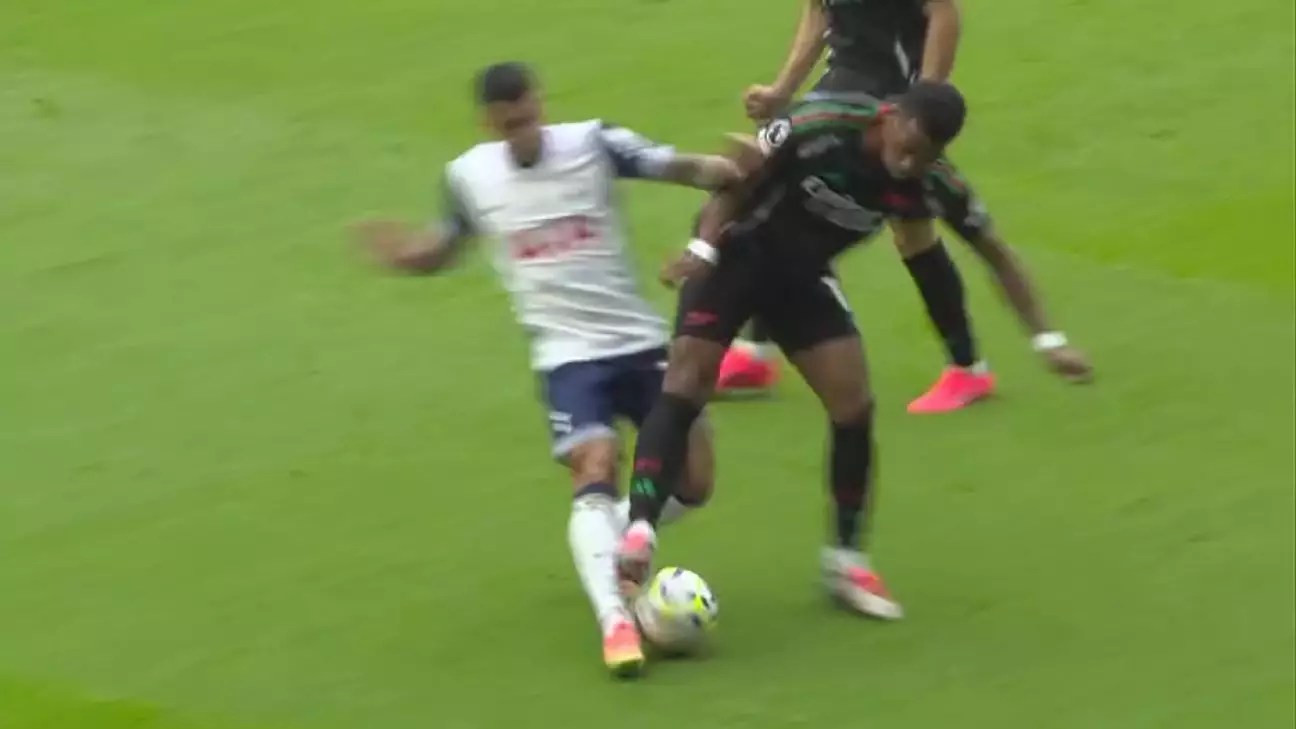In today’s high-octane Premier League environment, the Video Assistant Referee (VAR) has emerged as a crucial yet contentious presence in football. Each weekend, fans and analysts alike parse over crucial decisions made during matches, leading to spirited debates about whether these interventions are leading to fairer outcomes. The overarching question remains: How are these decisions rendered, and do they align with the intended laws of the game? With cases inundating the headlines—from penalty appeals to offside goals—the actions of VAR are under scrutiny, with differing outcomes often leaving fans in confusion.
The VAR system was introduced as a means to ensure accurate officiating, minimizing human error. However, as illustrated by recent incidents, its application can sometimes exacerbate frustration rather than alleviate it. This article aims to deep-dive into a few significant VAR decisions from the most recent round of fixtures, contrasting its effectiveness with traditional refereeing.
Differentiating Red Cards: The Timber and Jones Case
A significant incident unfolded during a recent match involving Arsenal and their defender, Jurriën Timber. A challenge against Pedro Porro in the 37th minute incited discussions on the differing interpretations of red card offences. Timber’s challenge resulted in a yellow card, which was backed by VAR, prompting a review of the decision made by the on-field referee, Jarred Gillett.
In stark contrast, Liverpool’s Curtis Jones received a red card last season in a similar clash at Tottenham. Key differences in both plays pivot around the nature of the tackles, particularly the level of force and the position of players’ feet. While Timber made a fairly innocuous tackle, Jones’s challenge involved a more reckless extension of his leg. Such nuances underscore the complexities the VAR faces: assessing various angles and the type of contact made can lead to drastically different outcomes despite seemingly similar scenarios.
In another match, the incident involving Cristian Romero during Kai Havertz’s close-range header raised eyebrows over the criteria for handball penalties. The ball inadvertently struck Romero’s arm after a parried save, and VAR reviewed the situation but ultimately upheld the referee’s decision not to award a penalty. Two essential factors went into this reasoning: Romero’s arm position was deemed natural for his body’s movement, and he had no direct control over the ball’s trajectory.
This decision circumvents the frequently murky waters of what constitutes a penalty due to handball. The application of handball rules has evolved, reflecting the need for clear guidelines, especially in high-stakes scenarios. By punishing only blatant handballs and favoring intentional play, the VAR system strives to preserve the spirit of the game, albeit with some contentious outcomes.
Offside Technology: Crystal Palace’s Goal and the Future
The disallowed goal for Crystal Palace stirred further debate regarding offside technology. When Jean-Philippe Mateta scored, VAR reviewed the assistant referee’s offside call to award the goal instead. The confusion that followed highlighted persistent issues with visualizations of tight offside calls—particularly in stadiums like Selhurst Park, notorious for less-than-optimal viewing angles.
Manager Steve Cooper’s demand for more conclusive images underscored the significant gap in VAR communications. While imminent changes with semi-automated offside technology promise increased accuracy, a divided system raises concerns. Mateta’s goal indeed passed the current tolerance levels of offside but remains under the potential scrutiny of forthcoming technologies, creating a juxtaposition and clear disparity in officiating standards within the same season.
An additional instance of VAR scrutiny emerged after Ollie Watkins equalized for Aston Villa amidst disputed offside positioning. The question centered on whether an offside player—who the ball deflected towards—had actively influenced the defending player leading to the goal. VAR concluded that the offside player did not exert undue influence, a decision which, while correctly applied based on the rules, nevertheless reignites dialogue around the impact of marginal offside players in play.
Such assessments illustrate the intricacies referees and VAR officials must navigate and, consequently, highlight how the game continually evolves in its interpretation of the rules. As the Premier League pushes for technological advancements, understanding the nuances behind decisions remains paramount for both officials and supporters.
The Future of VAR: An Ongoing Evolution
Ultimately, VAR in the Premier League is a work in progress, highlighting the need for continued education on the rules and their interpretations. While technology strives to enhance the gameplay experience, inconsistencies and subjective judgments still pepper discussions. Understanding the reasons behind each decision, in light of varied contexts and nuances, can promote a more informed fan base and ultimately lead to a more harmonious football community.
As we anticipate the arrival of semi-automated offside technology in the league, there’s a collective hope for greater clarity. Fans deserve transparency and consistency in how the game is officiated, allowing the beautiful game to thrive without the overshadowing cloud of controversy. The lessons learned from each VAR decision not only reflect current standards but shape the future of football officiating as we know it.


Leave a Reply